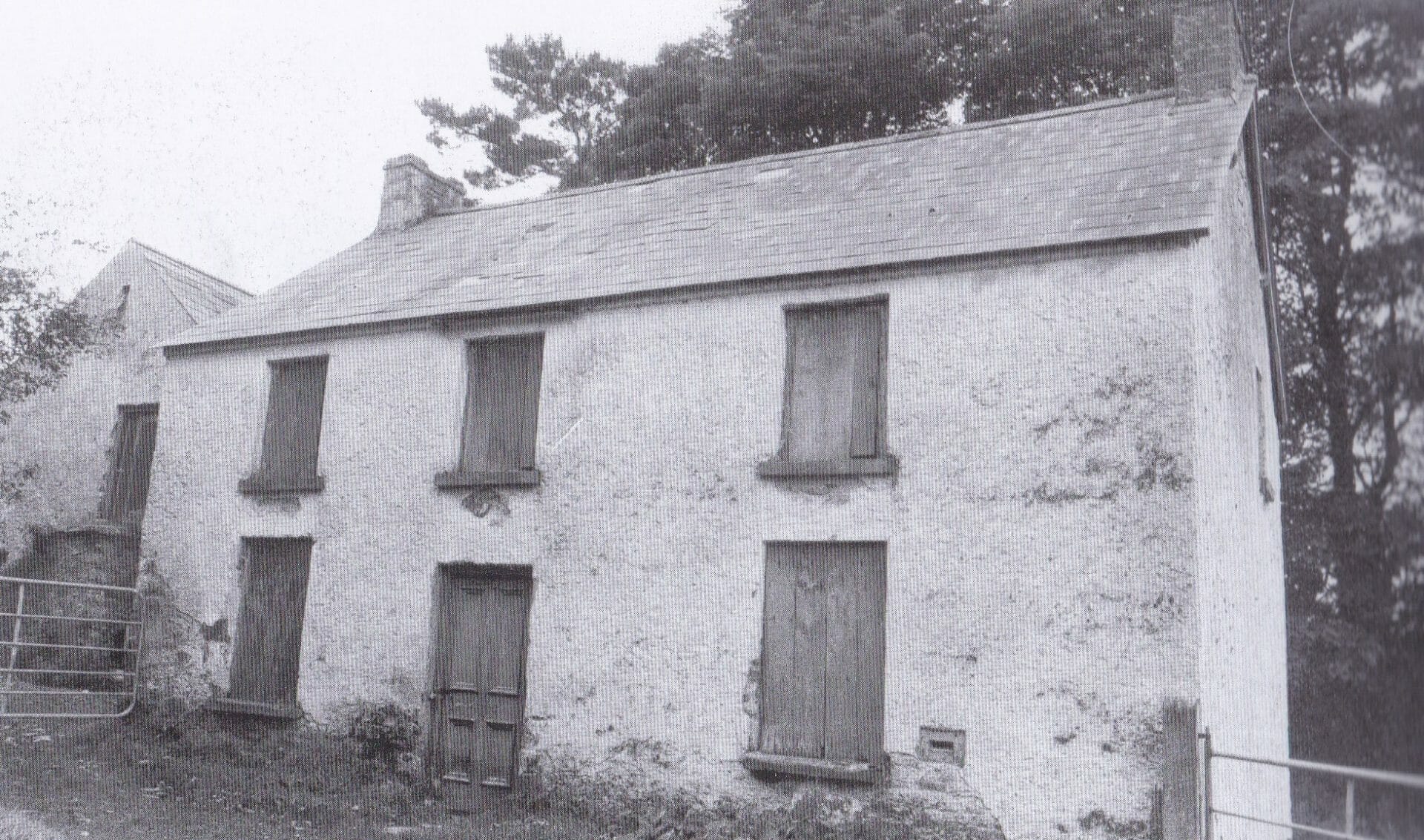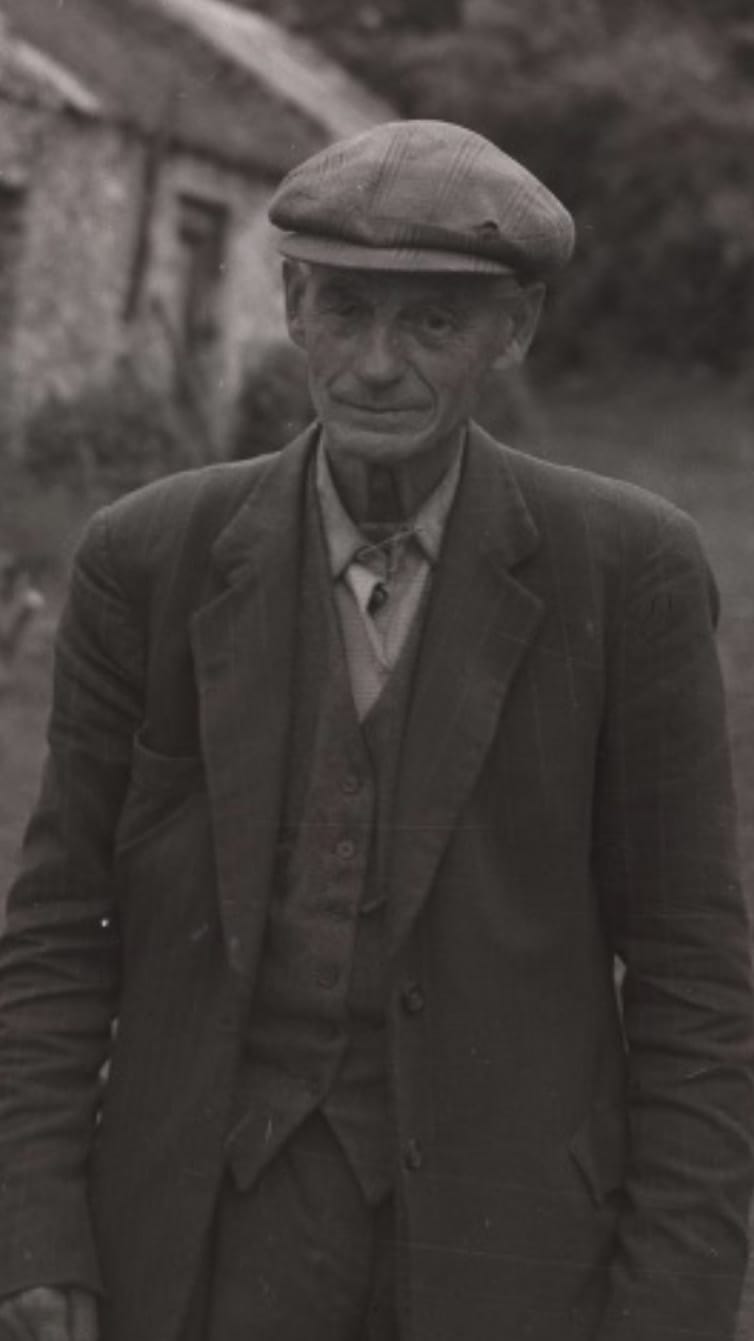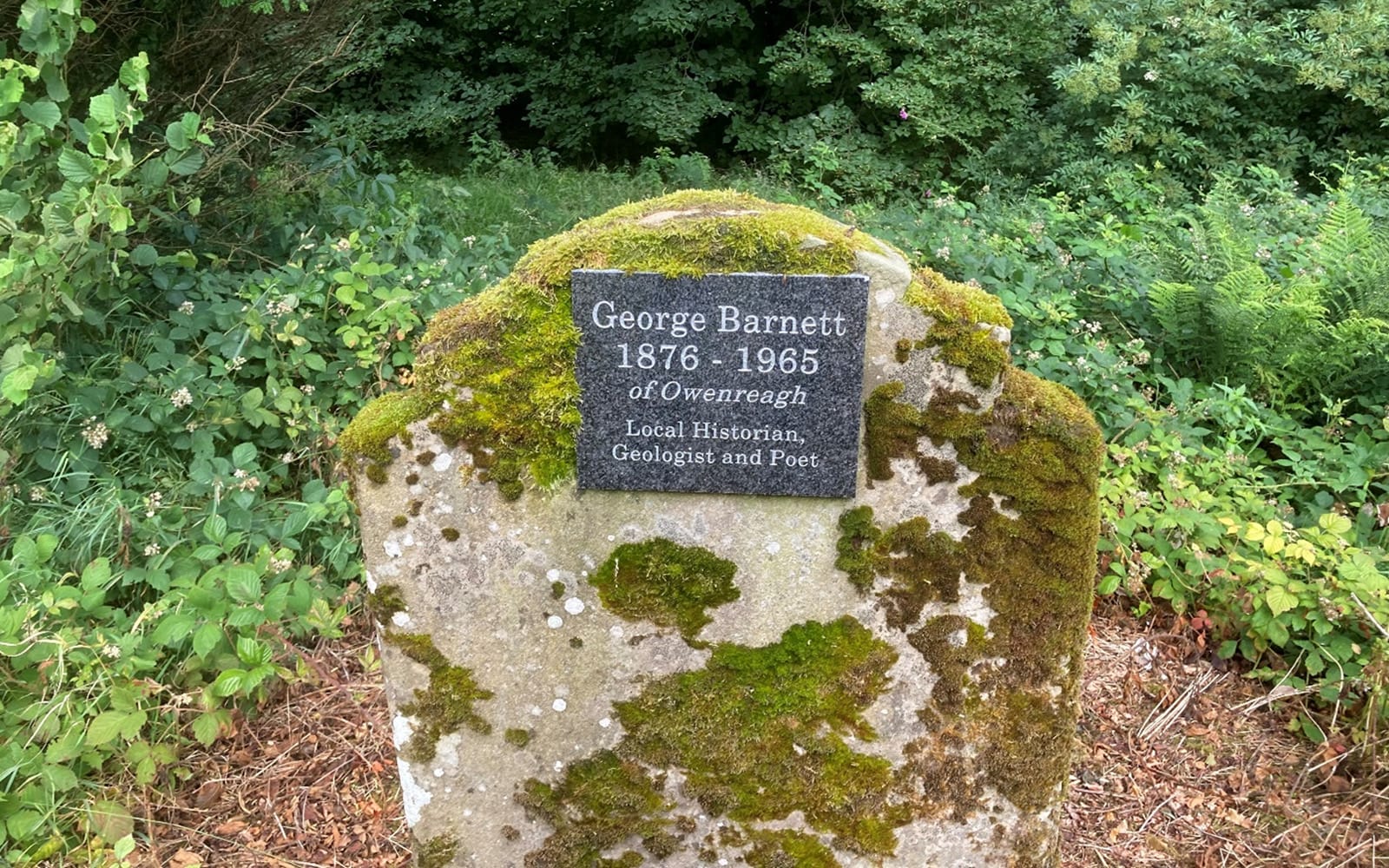In the 1830s there was a John McKeown living here. By 1856 the place has obviously passed on to his son William McKeown. After William died in January 1884, aged 67, George Barnett seems to have taken over and raised his family there. By 1901, George is a widower and is living there with his two sons, Geordie 25, and James 21 as well as his daughter Annie 17. Also living there is Mary Cleary from Moneyconey who helped him to bring up the children.
The last member of this family to have lived in the old version of this house was Geordie Barnett (jun), a renowned, self educated botanist, archaeologist, poet and musician.
Geordie discovered the Beaghmore stone circles. He was an expert on the physical and natural landscape of the Sixtowns and far beyond. His house was always full of artifacts and stones which he had unearthed as he wandered around the countryside, always alert for something new or interesting. Pat Joe McKenna remembers going with Geordie into Tullybrick glen where he helped him to look for minerals in the rock Geordie would point out the places to look and Pat Joe would chip away.
He was also a local poet and his poems are now such a valuable source of our local folk history in Sixtowns. He wrote about incidents that happened in the area then as well as about people and characters who lived in the Sixtowns at a time. Those simple writings give us an insight into life in our area in those days and the character of those people who are now dead and gone. The more you read Geordie`s poems the more fascinated you get by them.
He played the fiddle and wrote songs. Thomas McKenna still has in his possession, a type of tin and wood fiddle which Geordie made for him. He was a very gentle natured man and he was very popular both in the Sixtowns and beyond.
You could meet Geordie just about anywhere in the east Sperrin area, with his little bag of tools on his back and his magnifying glass, scouring the landscape for precious stones, minerals or investigating simple curiosities that he would encounter around the countryside. He always had time to talk to people and explain aspects of his work.



